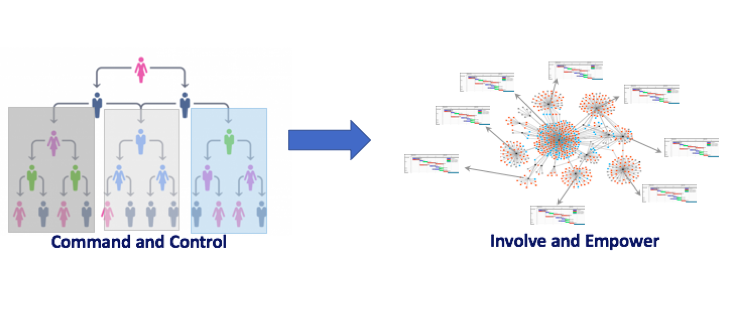
Why is it so difficult to change, even when we know how to make it happen? Why is it so difficult to embrace newly learned and valid concepts and apply them? There are reasons why people resist change and there are also practical ways to work towards achieving an agreed upon goal.
This was part of the abstract for a webinar I was invited to give for the Project Management Institute this month. As I delivered the content live, I was thrilled (and a little nerve-wracked) to see that there were 1,750 people in attendance. Change is a hot topic.
All of us face the challenge of change
All of us, not just project managers, face the challenge of change at an unprecedented rate. Projects are especially relevant because every project introduces a change into reality – that is why they exist.
At Intelligent Management we deal day-in-day-out with change for two major reasons. Firstly, a large part of our work is based on the Theory of Constraints developed by Dr. Eliyahu Goldratt. As part of that body of knowledge, Goldratt created a series of robust, systemic Thinking Processes to deal with resistance to change. We have been working with them for over 20 years, since they were first introduced.
Secondly, our job is to guide organizations through transformation, away from the prevailing management style based on vertical hierarchy and artificially created silos towards one of system optimization. Transformation has been our focus for two decades and we have learned many things from that. Here are just a few.

Transformation requires a powerful approach
There is a lot of heavy lifting to do when it comes to transformation. You can’t just go at it, you need a model (epistemological framework). As one of our readers put it, they see too often that people are “devoid of conscious models to think through the reality of their activity and rush into action, especially in this period of acceleration and major technological change.”
It’s about a process of cognitive change
Change is not just about doing things differently. First and foremost, it’s about thinking differently in order to make change possible. Why do so many efforts to bring change flounder? Because they fail to address the cognitive challenge. This is what we have come to call the Human Constraint.
Systemic transformation requires systemic thinking
When you try to change a whole organization or system, then you need to be able to think systemically to do it. In other words, you need a way to see the big picture and avoid the ‘divide and conquer’ mindset. You need to learn to think your way through from the beginning to the end and all the possible implications, to see connections that others don’t see and to be able to connect the dots. This requires a method.
We’ll be looking at Change Management some more in upcoming posts.
The Intelligent Management Partners are trusted advisors to leaders of organizations. We blog about how to shift your thinking towards broader, systemic possibilities for yourself and your organization. Sign up to our blog here. Intelligent Management provides education and training on systemic management, W. Edwards Deming’s management philosophy and the Theory of Constraints (Decalogue methodology) in North America and Europe.
See our new books The Human Constraint – a business novel that has sold in 27 countries so far and ‘Quality, Involvement, Flow: The Systemic Organization’ from CRC Press, New York. by our Founder Dr. Domenico Lepore, Dr. .Angela Montgomery and Dr. Giovanni Siepe.





Leave a Reply